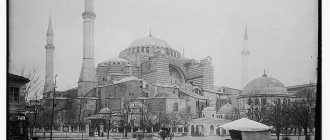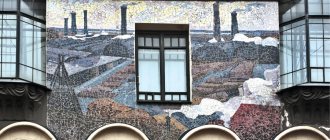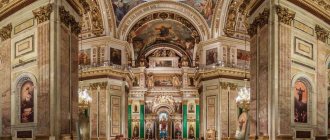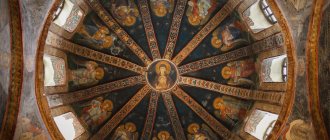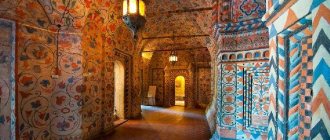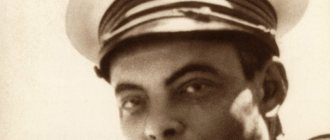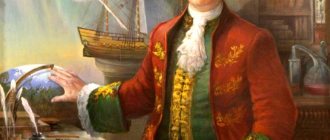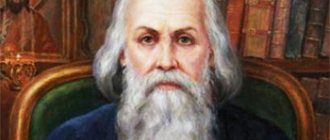“Byzantium created a brilliant culture, perhaps the most magnificent that the Middle Ages have ever known.” Charles Diehl
The history of Byzantium is a special page in the history of the Middle Ages. It was here, in the state formed after the division of the Roman Empire, that the legacy of the Greco-Roman civilization, enriched with eastern elements, received a worthy continuation. It was here that the eastern version of Christianity, later known as Orthodoxy, strengthened and flourished. Masterpieces of architecture, literature, and icon painting, significant for the entire medieval world, were born here...
The main achievements of Byzantine culture
When historians talk about the power and influence of empire, they usually have a political component in mind. The Romans are known for their achievements in the field of military art, theory of state and law. The systems and regulations they developed during their reign underlie most modern developed states. It was completely different with the Eastern Romans - hardly anyone remembers Byzantine law and the principles of citizenship when mentioning Constantinople. The influence of this civilization is deeper - aesthetic and religious.
Was there a Byzantine Empire?
In its heyday, the Eastern Roman Empire was called “Romean” (Greek: Romeo - Roman). They began to call it Byzantium much later, taking as a basis the original name of the capital - Constantinople.
Types of frescoes
The basic principle of creating a fresco has changed and been supplemented over time. Climate, composition of plaster, paint recipe, etc. played a role. Therefore, it is customary to distinguish several types of frescoes.
1 / 3
A “true” fresco is also called a “buon fresco”. When creating it, the craftsmen applied the topmost layer of soil only to that part of the wall that they were going to paint at the moment. The paint with this approach does not contain binding components, so it must have time to be absorbed into the soil before it dries.
1 / 3
This fresco was widespread in ancient times and in ancient times. An example of it can be the wall paintings in Pompeii. In later times, pure fresco was widely used during the Renaissance, primarily in Italian art. Such works were created by Giotto (paintings in the Scrovegni Chapel), Michelangelo (“The Last Judgment”) and other artists.
1 / 2
The ability to create pure frescoes was considered in Italy a sign of superior skill. When Michelangelo created his “Last Judgment,” he was advised to paint it with oil paints, but the great master was indignant and burst into abuse, declaring that he did not recognize any other style than “buon.”
Apotheosis of Ignatius by Andrea Pozzo
Mezzo is a type of fresco art invented in the 16th century. With this approach, dry plaster is moistened a second time and an image is applied to it. An example of this style is the work of Andrea Pozzo (“Apotheosis of Ignatius”).
1 / 2
In ancient Russian art, as well as in Italian until the 16th century, mixed techniques were used. The main image was created on a damp surface, and after drying, the details of the composition were added with egg tempera.
Frescoes by Andrei Rublev and Daniil Cherny
Examples include the works of Dionysius, a Russian artist of the late 15th - early 16th centuries (the image of St. Nicholas on the dome of the Ferapontov Monastery), Andrei Rublev (paintings of the Assumption Cathedral in Vladimir).
Forming the Foundations
The culture of Byzantium is the heir to the culture of the Roman Empire - the Romans borrowed the original concepts and achievements of the ancient world in the field of law, fine arts, music and architecture. But the geographical location of the state, its trade relations and the characteristics of the migration of peoples, opened national borders to the influence of the East. This symbiosis of the historical past of the ancient period and the barbarian environment served as the basis for the formation of a very special education.
photo from the site 1.bp.blogspot.com/
Khludov Psalter
Mid-9th century. State Historical Museum, Moscow
Iconoclasts John the Grammar and Bishop Anthony of Silea. Khludov Psalter. Byzantium, approximately 850 © rijksmuseumamsterdam.blogspot.ru
The Khludov psalter, named after Alexei Ivanovich Khludov, who owned the manuscript in the 19th century, is one of three surviving psalters created in the Studite monastery of Constantinople shortly after the restoration of icon veneration (after two centuries of literal oblivion of the pictorial art, during the years 726–843, anthropomorphic images of Christ and saints remained illegal). This manuscript (the so-called monastic edition of the psalter with illustrations in the margins) is the most complete of the three and the most abundantly illustrated.
The most telling feature of her miniatures is the artistic response to recent events. The illustration for Psalm 68:22, “And they gave me gall for food, and in my thirst they gave me vinegar to drink,” depicts two iconoclasts dipping the sponges at the ends of their spears into lime to smear the face of Christ with them. Their long, standing hair brings to mind medieval depictions of the devil, who traditionally wore a similar hairstyle. On the same page there is an explicit comparison of the iconoclasts with those who crucified Christ (the same movements and objects in their hands), which leaves no chance for rehabilitation for the former - their faces, so hated by the medieval reader of the manuscript, were scraped out.
Periodization
The history of this state resembles a pendulum. Heydays were followed by downfalls, provoked by external influences or internal strife. Schematically, the following periods can be distinguished:
- IV - VII centuries. — the beginning of the formation of one’s own identity: the struggle between the ancient heritage and Christian theology;
- beginning of the 8th - first half of the 9th century. a period of economic and cultural decline caused by internecine conflicts;
- second half of the 9th - 10th centuries. - restoration of greatness, rise throughout the entire kingdom;
- XI - XII centuries. - two centuries of greatest prosperity - it was at this moment that mosaic and icon painting acquired their most complete form;
- XIII century - the sack of Constantinople by the crusaders, a decline in influence with periodic attempts to restore power;
- XIV - early XV centuries - crisis and fall. Conquest by the Ottomans.
If we make the division more conditional, then we can limit ourselves to just two stages: early (V–early 9th centuries) and late (9th-15th centuries).
The early period was marked by the filling of Roman philosophy with the Eastern way of thinking and a gradual rethinking of the heritage of the West. As cultural values interpenetrated, the symbiosis became more and more noticeable - the combination of different codes manifested itself in both politics and the spiritual sphere. Already by the middle of the 6th century. Byzantium formed its own identity, which it maintained even during periods of conquest.
Despite its power, Byzantium was defeated and destroyed. However, its legacy lies at the core of the national cultures of many Orthodox countries. Learn more about the influence of once great empires in the article "The Aztecs and Their Achievements"
The Roman Empire became the first example of classical Christian culture. It was here that the philosophy and doctrines of the young religion took their completed form in the Orthodox Church. The influence of the spiritual could be traced everywhere: in political life it was expressed in the deification of power and imparting sacredness to the image of the emperor; in painting there was no equal to Byzantine icon painting; New landmarks and elements of architecture appeared in architecture.
On the other hand, the role of Christianity has not always been positive. The culture of medieval Byzantium was marked by a period of intra-elite strife. One of the most influential was the iconoclast movement. Formed under the influence of Old Testament texts, it was directed against the veneration of icons, and for a long time slowed down the development of icon painting. Only by the beginning of the tenth century did the icons take their former place.
Table – the main achievements of Byzantine art in brief
| Period | Sphere | Achievements |
| VI century, XIII-XV centuries. | Architecture | – great attention was paid to decorating the temple (not only outside, but also inside); – a type of domed basilica was developed (example: the Basilica of St. Sophia); – construction of cross-domed churches begins (Apostolic Temple); |
| IV-V centuries | Sculpture | – inheritance of the traditions of Rome; – distribution of sculptural reliefs depicting everyday life and scenes from biblical subjects. |
| V-VIII centuries | painting and applied arts | – flourishing of mosaic (smalt); – high spirituality of images; – icon painting as the main form of painting; – under the influence of iconoclasts, the replacement of individual images with ornamental motifs, images of nature, animals |
| XIII-XV centuries | – a strict pictorial canon is developed in the placement of religious images; – restoration of individualization of iconographic images |
Sacred image
When and how was the art of icon painting born? What is an icon? How, for example, does the icon of the Mother of God differ from her image on the wall of the temple?
In a broad sense, an icon is almost any sacred image. Even in some art history publications you can see, for example, the phrase “icons on the walls of the Roman catacombs.” But still this is not entirely true. Unlike a temple fresco or mosaic, an icon is an independent work that can either be located in the interior of a temple or other building, or be used during a religious holiday or religious procession, and also accompany, for example, its owner on a trip.
Annunciation. XIV century Church of St. Clement in Ohrid
In the Christian tradition, the first icon painter is considered to be the Evangelist Luke, who created images of the Mother of God and the Apostles. If we talk about the first holy images that have come down to us, they date back to the 6th century. A classic example is the image of “Christ Pantocrator”, now located in the monastery of St. Catherine on Mount Sinai, the oldest image of the Savior known to us. It was created in Constantinople - possibly on the personal orders of Emperor Justinian, who soon sent the image to the monastery he founded. The icon is made using the encaustic technique (from the Greek έʏκαuσтıκἠ - “burning”): colorful pigment is mixed with a wax base and applied to the base (in this case, a board) in a molten form. This technique is another proof of the depth and synthetic nature of Byzantine culture: encaustic painting was popular, in particular, in Roman Egypt in the first centuries of our era. An example is the so-called “Fayum portraits”.
The phrase “Fayum portraits” usually refers to funerary portraits made in the first centuries of our era in Roman Egypt. These portraits, created using the encaustic technique, replaced the traditional Egyptian masks that were placed with the mummy in the burial. They were named “Fayum” after the place where the first such works were found - in the Fayum oasis. The portraits are distinguished by incredible vividness and subtlety of the image.
As for the image of the Savior from the Sinai monastery, it became the basis for all subsequent iconography of this type. And the value of this work lies, first of all, in the fact that it was written without regard to the canons: it itself became a pictorial canon for many centuries, remaining in history as an act of imprinted pure faith.
Christ Pantocrator. VI century Monastery of St. Catherine (Sinaia)
...It is in early Byzantine icon painting that the characteristic features of this type of art develop: conventionality and symbolism of the image, reverse perspective, representation in one pictorial field of events relating to different times, “luminosity” (that is, there is no visible source of light in the work, it seems to be emitted the figures themselves).
Features of the world of Byzantine art
The history of the development of the Roman Empire represents a movement from borrowed cultural forms of the East and West to the achievement of its own identity.
The dominant factor in shaping the aesthetics of the state was Christianity. Religion was perceived as the central axis of development not only of art, but also of the political system.
If we talk about the features briefly, Byzantine culture was characterized by:
- entertainment and spiritualism;
- eclecticism of styles and trends;
- sacredness and cultism.
Find out more about the history of the empire and the world of Byzantine art:
Minology of Vasily II
Beginning of the 11th century. Vatican Library
20 thousand martyrs of Nicomedia. Miniature from the Minology of Basil II. The beginning of the 11th century © Wikimedia Commons
The 10th–11th centuries in Byzantium became the time of great hagiographic hagiography - a set of lives of saints and other genres dedicated to the life and work of saints, such as miracles, martyrdoms, etc. projects like minology Minologies are a collection of the lives of saints, arranged in the order of their commemoration during the liturgical year (September to August). Symeon Metaphrastus, stylistic unification of hagiographic texts and compilation of collections free from pre-iconoclast marginal subjects.
The manuscript, now kept in the Vatican, was intended as a luxurious illustrated collection of the lives of saints, presented to Emperor Basil II the Bulgarian Slayer (976–1025). Each life takes up only 16 lines per page, while the rest of the page is devoted to miniatures. This is a unique case for Byzantine book writing of the subordination of text to image: the miniatures were written first (on several pages the text area remained empty). The code preserved the names of eight artists who worked on the creation of 430 illustrations - unprecedented material for analyzing not only the handwriting of the masters, but also the question of their cooperation within the artel.
The Minology of Basil II is a brilliant example of mature Byzantine art: in miniatures with portraits of saints and scenes of their martyrdom, a delicate balance was found between the imitation of reality, characteristic of Antiquity, and medieval convention and asceticism. Natural forms characteristic of nature turn into geometric ones; soft halftones - in golden assist Assist - lines applied in gold over the paint layer. Symbolizes divine light.; faces with individually specific features - into frozen symmetrical faces.
The uniqueness of the musical culture of Byzantium
photo from the site sonata-etc.ru
The lack of musical monuments of secular music does not allow scientists to fully appreciate the cultural heritage of the Byzantine period. A number of musicologists adhere to theories about the rhythmic and semantic influence of ancient music on the art of Ancient Byzantium. On the other hand, given the multinationality of the state, a more common point of view is a combination of styles and forms of Persian, Armenian, Syrian, and Jewish song.
The situation is different with church works. Sources have reached us that give an idea of what the musical art of Byzantium was like at that time. Mainly, it preserved the heritage of the Roman Catholic Church - Gregorian chant.
Main methods of execution:
- solemn reading of the Gospel texts;
- singing psalms and hymns;
- hallelujah singing.
In the era of late Byzantium, church services became more magnificent. The musical accompaniment of services also became more powerful - choral performance and polyphonic song structures came into use.
Manufacturing technology
Byzantine mosaics are characterized by high-level artistic craftsmanship. Its production is based on a piece element. With the correct selection of colors and shapes of all elements and fragments, the mosaic master would end up with an artistic masterpiece.
By mixing the starting ingredients in various proportions, craftsmen have learned to make up to several hundred different types of smalt. The simple metalworking tools that craftsmen had at their disposal in those days were well suited for its processing. Thanks to this cutting, individual elements were given geometric shapes that were convenient for laying them into a mosaic canvas.
Common forms of piece elements:
- cubic (used most often);
- rectangular;
- triangular;
- zigzag fragment;
- multifaceted, etc.
The main stages of mosaic manufacturing technology:
- Making a sketch of the future canvas. He was drawn in full. Then it was divided into fragments and semantic parts. Several artisans could work on one mosaic at the same time.
- Laying of primary elements was carried out only on a flat and smooth surface. Special attention was paid to its preparation and final quality.
- At the same time, the production of smalt is underway: ingredients are selected, when mixed, the master obtains the required color. For example, if a shadow falls on a character’s face, then this fragment will consist of 3-4 shades of smalt for a gradual transition of color.
- A distinctive feature of the finished drawing is the clear outline of each character and object. To do this, the contouring technique is used - when 1 or 2 thin lines are laid with small cubes along the boundaries of the object and background.
- To emphasize the holiness of the participants in the biblical event, smalt with the addition of gold, silver and mercury was used on the canvas. This technological move made it possible to create a lively effect and show the special significance of the events taking place.
Architecture
Hagia Sophia photo from world-countries.net
With the development of Christianity, the traditions of ancient architecture give way to a new style.
The specificity of the temples of the Ancient Greeks and Ancient Romans was their altar - the temples were built as the abode of a revered god. All ceremonial events took place on special platforms in front of the building, so the main attention was paid to the facade.
In the religious tradition of Christianity, a temple is a place for offering prayers. Its essence is changing - now it becomes a meeting place for believers. Therefore, the concept of construction is undergoing changes: the interior decoration is becoming more diverse, all the attention of the craftsmen is aimed at creating an atmosphere of spirituality, the sacredness of the place. The facade of the building received a fairly simple treatment - the appearance of Byzantine churches was significantly different from Catholic cathedrals of the Gothic style. Mainly, the cladding of the building was decorated with patterned brickwork. An important achievement of the architects of the Eastern Romans was the cross-domed church, which replaced the basilica type. The tradition of construction continues today in countries with Orthodox culture.
Obviously, the largest number of architectural masterpieces were located in the capital of the state - Constantinople. But as urbanization progressed, the architecture of other cities also developed - monuments appeared in Ravenna (mausoleum of Galla Placiddi). However, the main masterpieces of Byzantium are considered to be the Hagia Sophia Cathedral and the Church of Hagia Irene in the capital of the empire, the Temple of Hagia Sophia in Trebizond.
Influenced by the raids and cultural expansion of Western Christians, Byzantine architecture became increasingly complex. The role of decorating the exterior is increasing (Church of Christ the Savior in the Fields, as part of the ensemble of the monastery in Chora).
Sophia of Constantinople
532–537. Istanbul
Sophia of Constantinople. 1910–1915 © Library of Congress Hagia Sophia is the main architectural creation of Byzantium, created by the Asia Minor mathematician Anthimius of Thrall and the architect Isidore of Miletus.
Not just the first temple of the empire, but the center of its church and political life, an integral part of the scrupulous, carefully thought-out court ceremonial, described, in particular, in the treatise “On Ceremonies” by Constantine Porphyrogenitus. Hagia Sophia became the highest achievement of Byzantine architecture, being the heir of ancient architecture. Its idea was formulated in the 15th century by the architect Donato Bramante Donato Bramante (1444–1514), an Italian architect who built St. Peter's Basilica in the Vatican: “The Dome of the Pantheon The Pantheon is a temple in Rome, built in 126 AD. It is a rotunda covered with a hemispherical dome., grew up on the Basilica of Maxentius The Basilica of Maxentius is a temple in Rome, built in 308–312 AD in the form of a basilica: a rectangular structure consisting of three longitudinal naves covered with a stone vault.” Indeed, the brilliant guess of the authors of Hagia Sophia was the idea of merging two architectural ideas of Antiquity: the longitudinal ship of the central nave Nave (from the Latin navis - “ship”) is an elongated rectangular part of the interior, limited by one or two rows of columns and/or a wall. The space of medieval western and eastern temples is often divided into naves, where they came from ancient Greek and Roman architecture. (80 meters long) and the sphere crowning it (a flat, low drum and incredibly wide dome with a diameter of 31 meters) became a single whole: the thrust of the giant dome is “damped” by half-domes resting on powerful, complexly shaped pillars, from which the stone mass falls onto the sails and arches. Thanks to this, the side walls of the building became fragile, completely cut by windows, and the entire interior of Sofia was flooded with light, transforming the stone mass, making it weightless and intangible.
The thin shell of the walls, neutral on the outside (the monotonous Plinth is a wide and flat baked brick), and precious on the inside (gold, natural stones, abundance of natural and artificial light), turned out to be the most important discovery of Byzantine architectural aesthetics and was embodied in a huge variety of forms. And the dome of Sophia became an idea fix of Byzantine and then Ottoman architecture, never repeated by anyone: the project of Justinian’s architects turned out to be too complex and ambitious.
Interior of Sophia of Constantinople. 2000s © De Agostini Picture Library / Getty Images
Immediately after the completion of Hagia Sophia, its dome cracked and then underwent several repairs (the first of which occurred after the earthquake in 557), during which it was strengthened by building buttresses and laying part drum windows. It is not surprising that over time, the appearance of Sofia has mutated greatly: its logical structural frame was hidden by powerful stone risalits - part of the facade protruding at full height beyond its main line, small turrets and all kinds of service premises.
Iconography
photo from vidania.ru
Byzantine icons were the greatest achievement in Eastern Christian orthodox civilization. It not only formed the basis of a number of national cultures, but also influenced Catholic countries - Italy, in particular Venice, was under the influence of the Romans.
The development of the genre of visual creativity can be divided into several periods:
– pre-iconoclastic era; – iconoclasm; – post-conoclastic period.
The first period of the heyday of Byzantine icon painting preserves the features of antiquity, which are supplanted during the search for a visual language capable of transferring the essence of Christian dogmas and religious teachings into the plane of artistic graphics. Naturalism disappears, icons lose their individual features and become more schematic.
The development of fine art was stopped under the pressure of iconoclasm, which established itself as the official ideology for a whole century. At this time, icon worshipers were persecuted; many icon painters were forced to change their native state to neighboring countries, where they continued their work.
The Renaissance in the creation of icons began in the 20th century, and the real heyday came closer to the end of the Byzantine Empire. This period is characterized by a complication of colors, naturalism returns; the depicted figures acquire individuality, they become more airy, the iconography as a whole acquires the features of mannerism (The Twelve Apostles, The Descent of Christ into Hell).
Church of Simeon the Stylite (Kalat-Seman)
475 Aleppo
Basilica of the Church of Simeon the Stylite. Syria, first half of the 20th century © Library of Congress
In the 5th century in Eastern Syria, near Aleppo, lived Saint Simeon, who discovered a special type of asceticism - standing on a pillar. Renouncing the worldly in every possible way and caring about the mortification of the flesh, the monk was subjected to countless temptations, partially described in Luis Buñuel’s film “Simeon the Hermit.” Having spent several decades at an altitude of 16 meters, Simeon was honored by Christians from all over the world, including Persians, Armenians and the British.
Around that same pillar, which exists to this day (Byzantine miniaturists loved to depict Simeon’s pillar as a column with a capital, completed with an elegant balustrade, inside which the saint himself was located; sometimes a ladder was attached to the column), in the 80-90s of the 5th century there was A monastery complex was erected, the grandiose design of which found its equal only among the imperial ensembles of late Rome.
The octagonal core of Kalat Semana (translated from Arabic as “Simeon’s fortress”) is surrounded by three arms. Together they form a spatial cross, almost the same as in the Church of the Holy Apostles in Constantinople. Now the temple is in ruins, and what it exactly looked like immediately after construction is unknown, but thanks to the testimony of Evagrius Scholasticus, we know that the central core, which contained the pillar of Simeon, remained open.
Following Kalat-Seman, a whole architectural movement of the 5th–6th centuries arose, represented by the churches of Simeon the Stylite the Younger on the Wondrous Mountain, John in Ephesus and the Prophets, Apostles and Martyrs in Gerasa.
Mosaic
photo from the site 7iskusstv.com/
It is impossible to talk about the art of Byzantine mosaics within the framework of a general article. Various techniques and styles - masters improved their skills under the influence of the development of church architecture. Unique ornamental or naturalistic paintings decorated the facades of secular and religious buildings. Many of them were destroyed during the Crusades, the Ottoman conquest or the wars of the last century. By the 11th century. A unique style of Byzantine mosaic - smalt - developed. This is a special material for applied art, which was glass coated with a thin layer of gold. When the candles were lit in the evening twilight, the saints made using this technology shone, creating a humble and spiritual atmosphere during the services. By the 10th century The basic principles of the spatial arrangement of characters in plots illustrating the main biblical stories were established. In the dome of the temple they began to place a figure of Christ (mostly half-length), and in the altar - the Mother of God, folding her hands in prayer. Archangels and apostles were located on either side of the central figures. This is how mosaic graphics were built in the 11th-12th centuries. both in Byzantium itself and beyond its borders.
Sculpture
Sculpture in the Byzantine Empire did not receive much development, because The Eastern Church did not take very kindly to statues, considering their worship to be in some way idolatry. Sculptural images became especially intolerant after the resolution of the Council of Nicea in 842 - they were completely eliminated from cathedrals. Therefore, all that remained for sculpture was to decorate sarcophagi or ornamental reliefs, book bindings, vessels, etc. The material for them was, in most cases, ivory.
Porphyry tetrarchs The Four Tetrarchs are a sculptural composition made of dark red porphyry (dark red, purple rock), mounted in the southern facade of the Venetian Cathedral of San Marco. The statue was made in the first half of the 4th century. and was part of the Philadelpheion of Constantinople (one of the most important city squares of Constantinople), built next to the Column of Constantine (modern Cemberlitas Square). The famous Barberini Diptych is a Byzantine ivory product made in the antique style. This depiction of an imperial triumph dates from the first half of the 6th century, and the emperor is usually identified with Anastasius I or, more likely, Justinian I.
Barberini diptych (V-VI centuries)
Icon "Archangel Michael"
Second half of the 14th century. Byzantine Museum, Athens
© National Gallery of Art
Large icon (110 × 80 cm), probably painted in Constantinople, depicts the Archangel Michael the Great Taxiarch (Officer) with a scepter and the sphere of the world, crowned with a cross, the initials Χ Δ Κ (“Christ the Righteous Judge”) and image of a lion. This image represents one of the perfect examples of the Palaiologan Renaissance. The basis of its content was the ancient model, which Byzantine artists never completely forgot, but at certain historical moments they turned to it as the leading one. The archangel's clothes are speckled with golden assist - a reflection of the same divine light that, according to Gregory Palamas, is communicated to man. The face of the archangel (interpreted very individually, almost portrait-style) is snatched from the shadows by an even and deep glow, spiritualizing and transforming matter. The image of the archangel emphasizes both his royalty (his attributes are the same as those of the autocrat who embodied the supreme power on earth) and his impressive monumentality.
Modern manifestations of the direction
Byzantine art, even after the fall of Constantinople and the loss of statehood, continued to exist within other states and became the basis for the formation of later movements.
The influence of the Byzantine style can be clearly seen in such movements of medieval art as the Romanesque style and Gothic.
Russian-Byzantine artistic style: from temples and churches to icons
Later at the end of the 19th and beginning of the 20th centuries. The Byzantine style found application in Russian temple culture and a separate direction appeared - the Russian-Byzantine style. On the territory of Russia, many temple buildings were erected, corresponding to the canons and constructive solutions of Byzantine architecture. The dome of such temples often has a squat shape and is located on a wide, low drum. The central dome is much larger than the others. The remaining domes traditionally protrude beyond the structure only partially. The interior is devoid of any walls or partitions and consists of a single church hall.
As for modernity, elements of the Byzantine style are often used in the interiors of modern houses and in the manufacture of furniture.
Patron Icon and Michael
